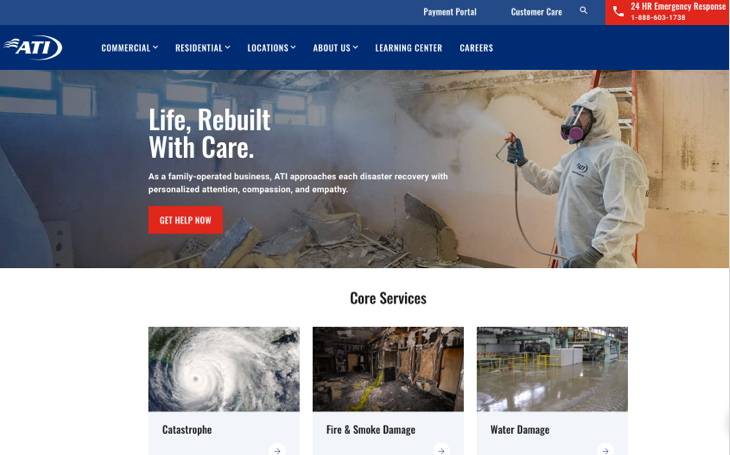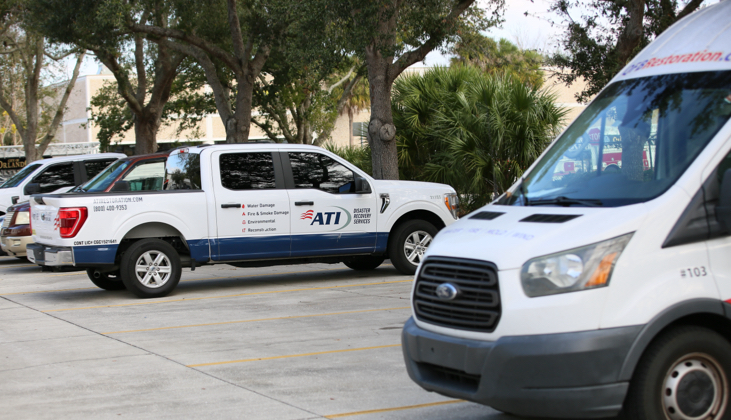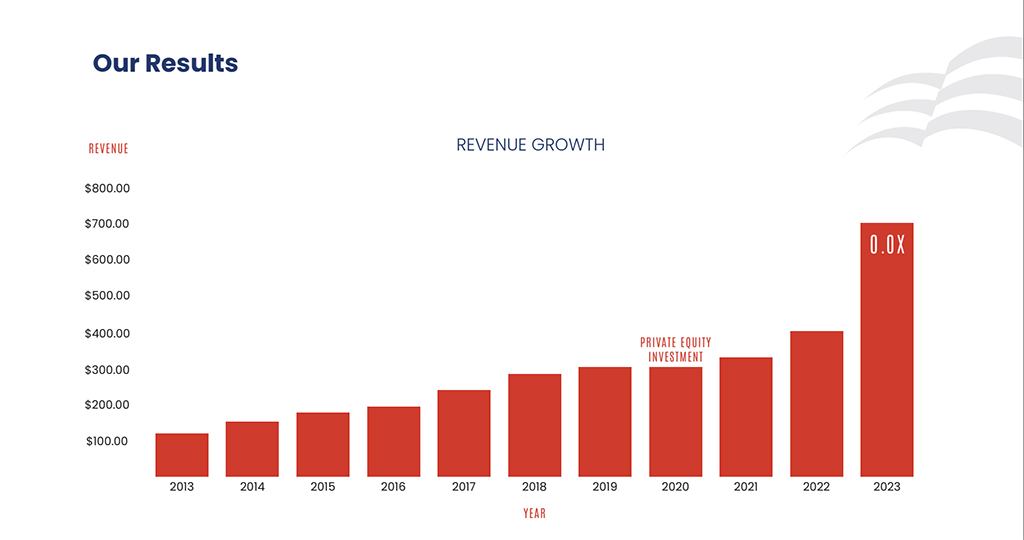Part 3 – Growing Your Business Online & IRL
Part 3 of a 3 part series
Whether you play the insurance game or not, every restorer can generate leads online and in real life through these opportunities:
- Fire departments
- Plumbers
- Website
- SEO
- Social media
- Reviews
- Restoration Industry Association
We all have finite resources, so you’ll want to determine which mix of opportunities best fits your company’s market, skillset, and budget.
Fire Departments

Chasing fires is a time-honored tradition in the restoration industry. Restoration contractors are critical in helping communities recover from disasters such as fires. When a fire strikes, contractors quickly clean up and restore damaged homes and businesses. Fires tend to be financially lucrative due to the size and magnitude of projects that have suffered a fire loss. You can follow the news, subscribe to various fire alert services, work directly with fire departments for referrals, or hire someone on staff who does this for a living.
One of the most effective ways for restoration contractors to reach potential customers is by marketing to fire departments. They are often the first point of contact for homeowners and business owners in the aftermath of a fire. We can position ourselves as trusted partners in recovery by establishing relationships with our local fire departments.
Fire departments possess a wealth of information about the local community, including potential customers who may require restoration services. By staying in regular contact, you can gain valuable insights into the community’s needs and tailor your marketing efforts accordingly.
Finally, marketing to fire departments can help build credibility and trust with potential customers. By demonstrating your expertise and commitment to the community, you position your company as a reputable and trustworthy partner in the recovery. This helps differentiate you from competitors and increases the likelihood that potential customers will choose your company.
How can you effectively market to fire departments? One effective strategy is attending local fire departments events such as open houses and training sessions. Setting up a booth and providing information about your services is a positive way to introduce yourself to your local firefighters and build relationships with them.
Another effective strategy is to offer training sessions or seminars for fire personnel. Sharing your expertise in fire damage restoration and mold remediation demonstrates your knowledge and establishes your company as a trusted partner in the recovery process.
Breaking into fire departments can be challenging, especially if an 800-BOARD-UP franchise dominates the market in your area. Getting to know your local firehouses and their staff is essential, as they require familiarity with your company before they’ll refer you. You can increase your visibility and grow your business by establishing relationships with firefighters, gaining insights into the community’s needs, and building credibility and trust with potential customers.
Plumbers
Developing relationships with plumbers is another proven strategy for any contractor looking to grow their business. Plumbers are often the first point of contact for homeowners who experience water damage or other plumbing-related issues. Building relationships with plumbers can position your company as a trusted partner in the recovery and increase the chances of being referred for restoration services.
When a homeowner experiences water damage, they often turn to a plumber for help. If the plumber does not have a restoration contractor to recommend, they typically refer the homeowner to their insurance company, who may then recommend a restoration contractor. This can result in the homeowner choosing a restoration contractor with whom they have no prior relationship. By developing relationships with plumbers, you increase the likelihood that your company will be referred for restoration services. This can be financially rewarding, as these projects tend to be smaller in scope but can add up over time.
Bear in mind that collaborating with plumbers for referrals can be fiercely competitive and may require paying significant referral fees to both the plumbing company and individual plumbers. Negotiating with insurance companies can also present challenges regarding plumbing referrals. Insurance companies may not appreciate this referral source, preferring to recommend their preferred restoration contractor. Navigate these challenges carefully and ensure you provide high-quality services to both plumbers and their clients.
Website

Investing in your website can help you attract new customers, increase sales, and grow your business. These days, a website is often the first point of contact between your business and potential customers. A website serves as a virtual storefront, providing customers with information about your business, its services, and its values. A well-designed and informative website demonstrates to potential customers that your business is reputable, trustworthy, and committed to providing high-quality services. Providing customer testimonials and case studies also helps differentiate your business from your competitors and persuade potential customers to choose your company. A high-quality website can make a lasting impression on potential customers and be a key factor in driving sales and growth for your business.
SEO
Search engine optimization (SEO) is the art of optimizing a website to improve its visibility and ranking on search engines such as Google, Yahoo, or Bing. Optimizing your website for search engines can increase your online visibility, attract more traffic, and ultimately increase business.
For a company specializing in disaster recovery, SEO is vital. When disaster strikes, people often turn to the internet to find a local restoration company to help them with their needs. Optimizing your website for search engines ensures you appear at the top of search engine results pages (SERPs) and are more likely to be found by potential customers.
In addition to improving visibility and ranking on search engines, SEO can also help target specific keywords and phrases relevant to your business. For example, you may want to target keywords such as “fire damage restoration” or “water damage restoration” to attract customers specifically looking for those services. Targeting these keywords and phrases attracts highly targeted traffic to your website, which can result in more leads and conversions.
Another important aspect of SEO for disaster recovery companies is the ability to provide valuable information to potential customers. Restorers can demonstrate their expertise and build trust with their audience by creating high-quality content that addresses common questions and concerns related to disaster recovery. This can help establish your company as a trusted resource for customers looking for guidance in a stressful situation.
SEO is an important tool for restorers. Optimizing your website for search engines, targeting relevant keywords and phrases, and providing valuable information to potential customers can increase your online visibility, attract more traffic, and ultimately grow your business.
Social Media

Social media is another powerful tool to connect with potential customers and showcase your expertise. Social media provides a platform to share before-and-after photos and videos of restoration projects, which can help build credibility and trust with potential customers. This is especially important for companies specializing in fire and water damage restoration, where the results can significantly impact a customer’s home or business.
Social media can also provide valuable information to potential customers who may be dealing with a disaster situation. You can demonstrate your expertise and build trust with your audience by sharing tips and best practices for preventing and addressing fire and water damage. This helps position your company as a trusted resource.
Social media can also be used to provide updates and information to customers who are already using your services. For example, you can use social media to provide updates on the progress of restoration work, answer questions, and provide information on the steps you’re taking to ensure the safety of the customer’s home or business.
Finally, social media can effectively provide customer support and address customers’ concerns or complaints. By responding promptly to customers’ comments and messages on social media, you demonstrate your commitment to excellent customer service and build loyalty among customers and prospects alike.
Reviews
Online reviews have become an essential part of running any successful business. Reviews are a powerful factor influencing a potential customer’s decision to purchase a product or service. Studies have shown that almost 90% of consumers read online reviews before purchasing. Positive reviews can build trust and credibility with potential customers, while negative reviews can significantly impact your company’s reputation and sales.
Online reviews can also provide valuable feedback for your business. By reading reviews, you gain insight into what customers like about your products or services and what you can improve on. This feedback can help you make necessary changes to improve your service and ultimately increase customer satisfaction.
Online reviews also improve your visibility on search engines. Positive reviews can help your business rank higher in search results, making it easier for potential customers to find you. Reviews also serve as user-generated content, which also improves your search engine optimization (SEO).
By actively managing and responding to online reviews, you can build customer trust, improve your offerings, and ultimately increase your bottom line.
We learned the hard way how online reviews can hurt our business. A next-door neighbor of one of our high-level executives suffered an extensive fire. Naturally, he reached out to us. But after reading our reviews online, he elected not to hire us. Just like that, we lost a $500k project. You can bet we pay attention to our online reviews today!
Professional Development and Training

Training and education are crucial to any successful business. To make the most of these investments, it’s important to break them down into three parts: the business, the owner, and the staff. Each of these areas requires a different approach to training and education.
For the business, investing in coaching, consulting, or mentoring is important. This helps you identify strengths and weaknesses, develop strategies for growth and improvement, and provide guidance on important decisions. A coach or consultant can provide a fresh perspective on the business, while a mentor can offer valuable insights based on their personal experience.
For owners, joining groups like Vistage, business mentors, YPO, or other business leader groups can be incredibly valuable. These groups provide a supportive environment where owners can share experiences, learn from peers, and develop new skills. They also offer a sense of accountability, as members hold each other accountable for achieving their goals.
For our employees, training and education is critical at all levels of the organization. Remember, our company is only as good as our worst employee. Soft skills like communication, teamwork, and problem-solving are essential for building a strong and effective team. Technical skills, such as expertise and certifications, are necessary for providing high-quality service to our customers.
Investing in your employees is not just about your company’s bottom line. It’s about investing in their future and long-term potential. Providing education, knowledge, and technical expertise helps our employees succeed in their current roles and sets them up for success in their future careers. By investing in our employees, we invest in their growth and development, ultimately leading to increased loyalty, trust, and commitment to our company. Prioritizing the growth and development of our employees, creates a culture of excellence, innovation, and continuous improvement that benefits everyone in the organization.
We believe our employees are our most valuable asset. By investing in them, we are investing in the future of our company and our community. My advice to any owner seeking growth: invest in the people who already work for you. Make sure they are technically trained and certified.

Our company employs over 2,000 restoration professionals. Our in-house training and development center offers over 500 self-paced training courses. Fortunately, RIA enables contractors of all sizes to meet their employees’ training, certification, and continuing education requirements. Their training courses are led by industry experts and offered in various formats, including in-person, webinars, and on-demand. RIA also administers several advanced certification programs, considered the premier certifications within the restoration industry:
- Fire Loss Specialist (FLS)
- Water Loss Specialist (WLS)
- Contents Loss Specialist (CLS)
- Environmental Risk Specialist (ERS)
These advanced certifications are challenging. As an owner, you should have all four, so should your management team and the long-term talent you are cultivating within your organization. Once you have your four pillars, you go for the granddaddy of them all, the Certified Restorer (CR) designation. It’s the Ph.D. of the restoration industry.
Only send your most talented employees, smart people who want to learn and are hungry for education – people you cannot afford to lose. Speaking from experience, don’t force anyone. They must want it. These certifications require a HUGE COMMITMENT of their time and your money.
For more on RIA Pillars, see https://www.restorationindustry.org/certifications.
When it comes to industry training, there are plenty of other options. Here’s my cheat sheet:
• IICRC is the best and most common place for restoration, remediation, and carpet cleaning training.
• Verisk and Corelogic both offer training and certification for their estimating platforms. Don’t expect your estimators and project directors to be experts in a software system unless they’re certified.
• Don’t overlook training outside of the industry. I would recommend classes on management, leadership, writing, negotiating, etc.
Restoration Industry Association
In addition to training, the Restoration Industry Association is an excellent resource for restorers to work together and improve the industry collectively. Membership is an indispensable tool for growing your business. Here are three other membership benefits:
Affinity Partnership Program
RIA has negotiated discounts and rebates on all the products and services we restorers use. The ever-growing list of Affinity Partners reads like a who’s who in restoration, including Sunbelt Rentals and the industry’s leading software vendors. RIA members enjoy discounts with all of them. What’s the catch? You must be an RIA member. These discounts pay for your membership.
Size Matters
RIA is the voice of the restoration contractor. The bigger we are, the louder we speak. That’s particularly important when it comes to getting paid. Large or small, we contractors are dwarfed in size by insurance carriers and third-party administrators (TPAs). When getting paid, we have precisely zero power to negotiate. When we unite, we even have the playing field.
Networking
It’s not what you know but who you know. Strong relationships have always been crucial to success in our industry. RIA’s International Restoration Convention and Industry Expo is the year’s premier networking event. Over a thousand restorers, vendors, and insurance professionals converge for a week of golfing, training, and networking. Not already an RIA member? Go here (INSERT LINK) to become one today.
Conclusion

There is no definitive roadmap to success. Businesses of all sizes and shapes can be successful, regardless of their business partners or preference for insurance companies or TPAs. It’s crucial to define who you are, for whom you want to work, and what will prove most successful for your business.
If you’re a contractor thinking about expanding into a new market, you should consider whether you’re in all the verticals you want to be in and if you’re getting all the business you want from your current customers. If you are, then it’s time to expand. However, expanding close to home is best to avoid losing focus on your business and profitability.
If you choose to expand, find an employee who already works for you and is willing to move or transfer to the new market. This person should be someone whom you trust and respect. Ensure they understand your business to be your eyes and ears in the new location.
Before expanding into a new market, take your time to invest in the marketplace and conduct research. Spend the next 6 to 12 months researching the market and meeting with vendors, suppliers, and potential customers. As you make those rounds, the timing will become more logical on when you should open that office or if you should open that office at all.
Expanding your business may make you bigger, but it won’t make you better or earn you more money. On the contrary, you should expect to lose money as you expand, especially for the first year, and perhaps even the second and third years.
I remember growing up, Dad was gone a lot, chasing fires, running jobs, building an empire. He would come home from work and announce a milestone.
- He opened a second office.
- He received its first $1M job.
- He hired his hundredth employee.
- He expanded outside California.
One of my favorite stories is Dad reading about a fire at a local Chinese restaurant in the newspaper, back when we still read hard copies! Dad didn’t even have a business card yet. On his way to the restaurant, he stopped at the local print shop and had some cards made up. He went to the restaurant, met the owner, and convinced him that he could restore his family’s restaurant. Turns out Dad knew the adjuster, and just like that, he landed the first large loss in ATI’s history.
Each new milestone felt like ATI had reached the pinnacle, that the company had finally achieved real success. Looking back now, I learned that doubling your revenue means a bigger office, new vehicles, maybe an upgrade to first class on your next flight. But if you truly want to make a difference, you must add a zero.
I joined the family business full time after graduating from college in 2001. I was astonished when the company achieved a record $26M in revenue that year. I couldn’t imagine how I was going to help double our revenue, let alone add a zero to that lofty number. Yet here we are two decades later, America’s largest family-operated restoration contractor, closing in on $1B in revenue.

I’ve shared our family’s strategies for successfully growing a restoration business. No doubt you’ve discovered your own strategies, too. There’s no magic formula, just old-fashioned hard work, hiring people smarter than you, and believing in them. Time does the rest. The best marketing and business development is still a job well done.
Whether yours is a $1M company or a $10M company, here’s to adding a zero!
Part 3 of a 3 part series